

Merchandising Anime & Video games
History
The Japanese Paleolithic age covers a period starting from around 100,000 to 30,000 BC, when the earliest stone tool implements have been found, and ending around 12,000 BC, at the end of the last ice age, corresponding with the beginning of the Mesolithic Jōmon period. A start date of around 35,000 BC is most generally accepted.[2] The Japanese archipelago was disconnected from the continent after the last ice age, around 11,000 BC. After a hoax by an amateur researcher, Shinichi Fujimura, had been exposed[3], the Lower and Middle Paleolithic evidence reported by Fujimura and his associates has been rejected after thorough reinvestigation. Only some Upper Paleolithic evidence not associated with Fujimura can be considered well established.
Samurai
Samurai (侍 ?) is the term for the military nobility of pre-industrial Japan. According to translator William Scott Wilson: "In Chinese, the character 侍 was originally a verb meaning to wait upon or accompany a person in the upper ranks of society, and this is also true of the original term in Japanese, saburau. In both countries the terms were nominalized to mean "those who serve in close attendance to the nobility," the pronunciation in Japanese changing to saburai." According to Wilson, an early reference to the word Samurai appears in the Kokin Wakashū (905-914), the first imperial anthology of poems, completed in the first part of the tenth century.
By the end of the 12th century, samurai became synonymous with bushi (武士) almost entirely and the word was closely associated with the middle and upper echelons of the warrior class. The samurai followed a set of written rules called the Bushidō . Samurai teachings can still be found today in modern day society with the martial art Kendo, meaning the way of the sword.
Ashikaga Shogunate
The Samurai Suenaga facing Mongols, during the Mongol invasions of Japan. Moko Shurai Ekotoba (蒙古襲来絵詞), circa 1293.Various samurai clans struggled for power during the Kamakura and Ashikaga Shogunates.
Zen Buddhism spread among the samurai in the 13th century and helped to shape their standards of conduct, particularly overcoming fear of death and killing, but among the general populace, Pure Land Buddhism was favored.
In 1274, the Mongol-founded Yuan Dynasty in China sent a force of some 40,000 men and 900 ships to invade Japan in northern Kyūshū. Japan mustered a mere 10,000 samurai to meet this threat. The invading army was harassed by major thunderstorms throughout the invasion, which aided the defenders by inflicting heavy casualties. The Yuan army was eventually recalled and the invasion was called off. The Mongol invaders used small bombs, which was likely the first appearance of bombs and gunpowder in Japan.
The Japanese defenders recognized the possibility of a renewed invasion, and began construction of a great, stone barrier around Hakata Bay in 1276. Completed in 1277, this wall stretched for 20 kilometers around the border of the bay. This would later serve as a strong defensive point against the Mongols. The Mongols attempted to settle matters in a diplomatic way from 1275 to 1279, but every envoy sent to Japan was executed. This set the stage for one of the most famous engagements in Japanese history.
In 1281, a Yuan army of 140,000 men with 5,000 ships was mustered for another invasion of Japan. Northern Kyūshū was defended by a Japanese army of 40,000 men. The Mongol army was still on its ships preparing for the landing operation when a typhoon hit north Kyūshū island. The casualties and damage inflicted by the typhoon, followed by the Japanese defense of the Hakata Bay barrier, resulted in the Mongols again recalling their armies.
Hiragana concept
As the page of "Learn Japanese Language & Characters" explains, the pronunciation of Kana characters has Seion, Dakuon, Handakuon, Yoon, Sokuon, Chouon, and Tokushuon. You can study four basic pronunciation called Seion, Dakuon, Handakuon, and Yoon. "Language education" is always started from the study of the alphabet. Now, let's learn the alphabet of the Japanese language.
4 Basic Idioms
Kanji Pronunciation Meaning 以心伝心 Ishin denshin heart-to-heart communication / to have a tacit understanding
一期一会 Ichigo ichie meeting only once in a lifetime / Every encounter is treasures, because there may be no reunion.
一騎当千 Ikki tousen to have capability to be equal to 1000 persons
一刻千金 Ikkoku senkin Every moment is precious.
一生懸命 Isshou kenmei all one's might / one's whole heart / desperately
一心同体 Isshin doutai one flesh / to be one body and soul
一世風靡 Issei fuubi to attract people's mind / to dominate the world and have a lot of followers
花鳥風月 Kachou fugetsu the beauties of nature such as flowers, birds, wind, and moon
完全無欠 Kanzen muketsu absolute perfection / impeccability
奇想天外 Kisou tengai out-of-this-world / fantastic things which cannot be expected at all
堅忍不抜 Kennin fubatsu to endure of firm volition and be not perturbed by anything / fortitude
行雲流水 Kouun ryusui the free heart without tenacity of purpose / takeing things as they are
山紫水明 Sanshi suimei outstanding natural beauty
色即是空 Shikisoku zeku All are phenomena although everything is equipped with various shapes. There is no invariable eternity substance and essence is the empty. (Teaching of Buddhism)
順風満帆 Junpu manpan smooth sailing / Everything is going well.
自由奔放 Jiyu honpou freewheeling
純真無垢 Junshin muku to be pure and innocent
森羅万象 Shinra banshou all the things which exist in the universe / all of creation
誠心誠意 Seishin seii wholeheartedly
大器晩成 Taiki bansei Great talents mature late.
天真爛漫 Tenshin ranman simple, naive and innocent
独立自尊 Dokuritsu jison to be independent with self-respect
波瀾万丈 Haran banjou many vicissitudes / stormy
百戦錬磨 Hyakusen renma to have gained many experiences
風光明媚 Fuukou meibi to be beautiful view / to be scenic
不言実行 Fugen jikkou to practice before words
粉骨砕身 Funkotsu saishin to try hard at the sacrifice of self
無念無想 Munen musou to banish all other thoughts from one's mind / to be free from all distracting thoughts
無我夢中 Muga muchu ecstasy / to forget self and be devoted to something
明鏡止水 Meikyou shisui mind as serene as a polished mirror
Shodo
Japanese calligraphy (書道 ,shodō?) is a form of calligraphy, or artistic writing, of the Japanese language. For a long time[when?], the most esteemed calligrapher in Japan had been Wang Xizhi, a Chinese calligrapher in the 4th century but after the invention of Hiragana and Katakana, the Japanese unique syllabaries, the distinctive Japanese writing system developed and calligraphers produced styles intrinsic to Japan.
Principles
Japanese calligraphy shares its roots with Chinese calligraphy and many of its principles and techniques are very similar. It is most often written with ink (墨 ,sumi?) on mulberry paper (和紙 ,washi?) and it recognizes the same basic writing styles: seal script (篆書 ,tensho?) (Chinese: 篆書 pinyin: zhuànshū); clerical script (隸書 ,reisho?) (Chinese: 隸書 pinyin: lìshū); regular script (楷書 ,kaisho?) (Chinese: 楷書 pinyin: kǎishū); semi-cursive (行書 ,gyōsho?) (Chinese: 行書 pinyin: xíngshū); and cursive (草書 ,sōsho?) (Chinese: 草書 pinyin: cǎoshū).
Shizuka
Sei / Shizuka: Sei / Shizuka is the Japanese kanji symbol of meaning "Tranquility and Serenity". Sei / Shizuka expresses not only physical silence but the peace of mind. The expert of Japanese martial art says, "The mind is always tranquil in the midst of fighting". And Buddhists sit in Zen meditation to train oneself for the tranquil mind. Thus, the kanji symbol of Sei / Shizuka expresses the peace of mind and the state of mind which rid oneself of all worldly thoughts.
Origami
Origami (折り紙 ,origami?) (from oru meaning "folding", and kami meaning "paper") is the traditional Japanese art of paper folding. The goal of this art is to create a representation of an object using geometric folds and crease patterns preferably without the use of gluing or cutting the paper, and using only one piece of paper.
Origami only uses a small number of different folds, but they can be combined in a variety of ways to make intricate designs. The most well known form is probably the Japanese paper crane. In general, these designs begin with a square sheet of paper whose sides may be different colors or prints. Contrary to most popular belief, traditional Japanese origami, which has been practiced since the Edo era (1603–1867), has often been less strict about these conventions, sometimes cutting the paper during the creation of the design.
Origami History
There is much speculation as to the origin of origami. It is generally believed that most of its modern developments occurred in Japan; however, there have also been independent paperfolding traditions in China, Germany, and Spain, among other places.
Origami had already become a significant aspect of Japanese ceremony by the Heian period of Japanese history. Samurai warriors would exchange gifts adorned with noshi, a sort of good luck token made of folded strips of paper. Origami butterflies were used during the celebration of Shinto weddings to represent the bride and groom.
R.P.S
Rock-paper-scissors (also known as paper-scissors-rock, scissors-paper-stone, jan-ken-pon, rochambeau (sometimes spelled roshambo) and many derived terms[1]), is a two-person hand game.
The game is often used as a selection method in a similar way to coin flipping, drawing straws, or throwing dice to randomly select a person for some purpose. However, unlike truly random selections, it can be played with skill if the game extends over many sessions, as a player can often recognize and exploit the non-random behavior of an opponent.
Sportspeople often use the game (both officially and unofficially, in place of a coin toss) to decide on opening plays. Similarly, uncertain calls, or even the whole game in case of rain, may be so decided.[citation needed] It is also often used as a method for creating appropriately non-biased random results in live action role-playing games, as it requires no equipment. It is also used in some online gambling sites as a form of novelty betting.
Anime
Anime (アニメ ?, taken from the first half of the Japanese pronunciation of "animation", pronounced [anime] listen in Japanese, but typically pronounced /ˈænɪmeɪ/ or /ˈænɪmə/ in English) is animation in Japan. The rest of the world regards anime as "Japanese animation". Anime originated about 1917.
Anime, like manga (Japanese comics), is extremely popular in Japan and well known throughout the world. Distributors can release anime via television broadcasts, directly to video, or theatrically, as well as online.
Both hand-drawn and computer animated anime exist. It is used in television series, films, video, video games, commercials, and internet-based releases, and represents most, if not all, genres of fiction.
History of Anime
Anime began at the start of the 20th century, when Japanese filmmakers experimented with the animation techniques also pioneered in France, Germany, the United States, and Russia.The oldest known anime in existence was screened in 1917 - a two minute clip of a samurai trying to test a new sword on his target, only to suffer defeat.
By the 1930s, animation became an alternative format of storytelling to the underdeveloped live-action industry in Japan. Unlike in the United States, the live-action industry in Japan remained a small market and suffered from budgeting, location, and casting restrictions. The lack of Western-looking actors, for example, made it next to impossible to shoot films set in Europe, America, or fantasy worlds that do not naturally involve Japan. Animation allowed artists to create any characters and settings.
The success of Disney's 1937 feature film Snow White and the Seven Dwarfs influenced Japanese animators.[6] In the 1960s, Osamu Tezuka adapted and simplified many Disney animation techniques to reduce costs and number of frames in the production. He intended this as a temporary measure to allow him to produce material on a tight schedule with inexperienced animation staff.
The 1970s saw a surge of growth in the popularity of manga—which were often later animated—especially those of Osamu Tezuka, who has been called a "legend" and the "god of manga". His work and that of other pioneers in the field, inspired characteristics and genres that are fundamental elements of anime today. The giant robot genre (known as "Mecha" outside Japan), for instance, took shape under Tezuka, developed into the Super Robot genre under Go Nagai and others, and was revolutionized at the end of the decade by Yoshiyuki Tomino who developed the Real Robot genre. Robot anime like the Gundam and Macross series became instant classics in the 1980s, and the robot genre of anime is still one of the most common in Japan and worldwide today. In the 1980s, anime became more accepted in the mainstream in Japan (although less than manga), and experienced a boom in production. Following a few successful adaptations of anime in overseas markets in the 1980s, anime gained increased acceptance in those markets in the 1990s and even more in the 2000s.
Anime University
Depending on the style, anime hair can be very complex. However, if you break it down into its basic components, the process of drawing anime hair becomes a little simpler.
Like real hair, anime hair is composed of many strands. However, rather than drawing each individual strand, the hair is often drawn in various sized/shaped clumps, as shown here. These are some of the simplest forms of each hair style. Notice that in most cases, the outline is more curvy on the bottom of the hair clump. This is especially apparent on the top leftmost example; the lower line is curvier than the top line, giving the hair more depth and more of that anime-ish look. Sometimes this is highly exaggerated, and other times it is hardly noticable, but for most anime hair styles, each individual strand of hair will have this basic shape.
Once you know how to draw each strand/clump of hair, you can start putting them together to form more something that more resembles anime hair. Look at each example here (well, exept maybe for that one on the lower left; I'm not sure why I left that in), and notice how the basic strands from the first step are used. The same similar shapes generally persist throughout many different hairstyles. Making one line curve out more than the other on each strand can really help to flesh it out.
Another thing to keep in mind is that you can make the hair as detailed as you like; just keep adding more strands. I'll go over this more shortly. ^_^
Now, we are getting into some slightly more complex shapes. Notice how varying the size and shape of each strand gives the hair different character; the strands can be long and thin, thick and curvy, or sharp and spiky. Again, notice that you can either make the hair very detailed, or very simple, depending on how many individual strands you draw.
Here are more examples of different basic shapes of hair. Take note of how the hair overlaps and is nested in itself when it bends or twists. You can make some really interesting hair by having it twist and turn all over the page.
J - Pop
J -pop is an abbreviation for Japanese pop, but is also a loosely defined musical genre that entered the musical mainstream of Japan in the 1990s. It refers to Japanese popular musicians, and was coined by the Japanese media to distinguish Japanese musicians from foreign musicians. Today, the Japanese music industry is the second largest behind the United States in the world. The origin of modern "J-pop" is said to be Japanese-language rock music inspired by The Beatles. Unlike former Japanese popular music called kayōkyoku, J-pop used a special kind of pronunciation. For example, Keisuke Kuwata pronounced the word "karada" (body) as "kyerada"] On the other hand, Taro Kato, a member of rock band Beat Crusaders, did not like it, saying that J-pop was not the encoded pop music but the pops music remembered by being aired many times
History - 1920s–1950s: Ryūkōka
Japanese popular music, called ryūkōka before being split into enka and poppusu, has origins in the Meiji period, but most Japanese scholars consider the Taishō period to be the actual starting point of ryūkōka, as it is the era in which the genre first gained nationwide popularity. By the Taishō period, Western musical techniques and instruments, which had been introduced to Japan in the Meiji period, were widely used. Influenced by Western genres such as jazz and blues, ryūkōka incorporated Western instruments such as the violin, harmonica, and guitar. However, the melodies were often written according to the traditional Japanese pentatonic scale. In 1930s, Ichiro Fujiyama released popular songs with his tenor voice. Fujiyama used a technique called Crooning through microphone. Jazz musician Ryoichi Hattori attempted to produce Japanese native music which had a "flavor" of blues. He composed Noriko Awaya's hit song "Wakare no Blues" (lit. "Farewell Blues"). Awaya became a famous popular singer and was called "Queen of Blues" in Japan.[12] Due to pressure from the Imperial Army during the war, the performance of jazz music was temporarily halted in Japan. Hattori, who stayed in Shanghai at the end of the war, produced hit songs such as Shizuko Kasagi's "Tokyo Boogie-Woogie" and Ichiro Fujiyama's "Aoi Sanmyaku" (lit. "Blue Mountain Range"). Hattori later became known as the "Father of Japanese poppusu". The United States soldiers—who were occupying Japan at the time—and the Far East Network introduced a number of new musical styles to the country. Boogie-woogie, Mambo, Blues, and Country music were performed by Japanese musicians for the American troops. Chiemi Eri's cover song "Tennessee Waltz" (1952), Hibari Misora's "Omatsuri Mambo" (1952), and Izumi Yukimura's cover song "Till I Waltz Again with You" (1953) also became popular. Foreign musicians and groups including JATP and Louis Armstrong visited Japan to perform. In mid-1950s, "Jazz Kissa" (ジャズ喫茶 ,Jazu Kissa, literally "Jazz cafe"?) became a popular venue for live jazz music. In the late 1950s and early 1960s, a genre called "kayōkyoku" became widespread. Although jazz did not become the mainstream genre of music in Japan, it had a large impact on Japanese poppusu
Foreign Culture
Impact on popular culture and an International fanbase
J-pop is an integral part of Japanese popular culture, being found in anime, commercials, movies, TV shows, and video games and other forms of J-ENT. Some television news programs even run a J-pop song during their end credits.
In anime and television shows, particularly dramas, opening and closing songs are changed up to four times per year. Because most programs have a combination of both opening and closing songs, it is possible for one show to use eight tracks for a single season.
Over the past decade, J-pop has continually gained fans worldwide through video games and anime. Many video game fans import games from Japan well before they are released in their respective countries. The theme songs and soundtracks from these games can be a gateway to further interest in J-pop and other genres of Japanese music. One example of this can be found in the games Kingdom Hearts and Kingdom Hearts II, in which popular J-pop singer Hikaru Utada performs the main theme songs. Her single "Easy Breezy" was also used to promote the Nintendo DS. The Ouendan Series and Band Brothers for DS both feature a lot of J-Pop songs. In the case of anime, shows are normally sold in the West with their original soundtracks untouched, affording more direct exposure (however this is sometimes not the case, leaving fans outraged). Some shows aired on television in the United States, for example, have seen their themes go so far as to become commercially available as ringtones through mainstream vendors in that country.
WORLD
Popularity in South Asia
With changing music trends in India and Bangladesh, J-pop has gained some ground. Although J-pop listeners are generally the younger generation in India, singles such as Hikaru Utada's "Colors" have been popular among listeners. After the channel Animax was introduced, J-pop spread among Indian listeners.
Artists
Japanese pop artists are extremely popular in Japan and some of them overseas (especially in Asia, but also in Western countries, where they have other fanbases). They are usually idols and influence not only music, but also fashion, and many areas of modern pop culture. During the 1990´s and the 2000´s, the most popular Japanese artists have been Ayumi Hamasaki, Ken Hirai, Hyde, Namie Amuro, Mr. Children, Every Little Thing, Hikaru Utada, Exile, Kumi Koda, Kobukuro, Morning Musume or B'z, Southern All Stars and Glay. For a more comprehensive list of artists, see:

 Merchandising Anime & Video games
Merchandising Anime & Video games


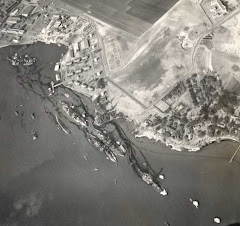
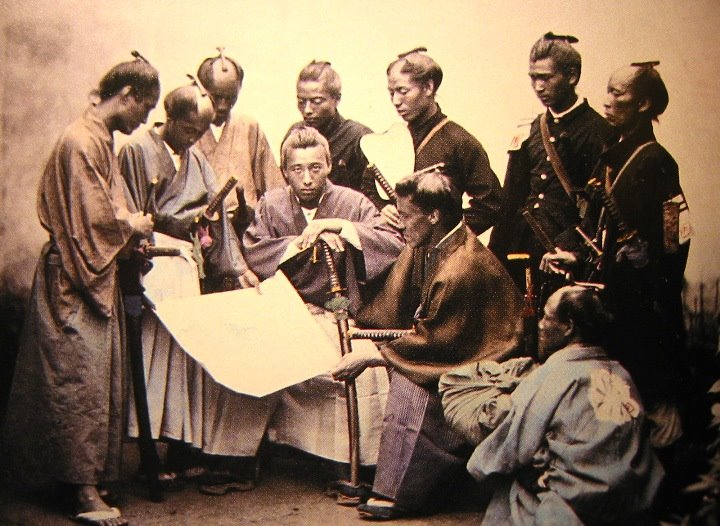

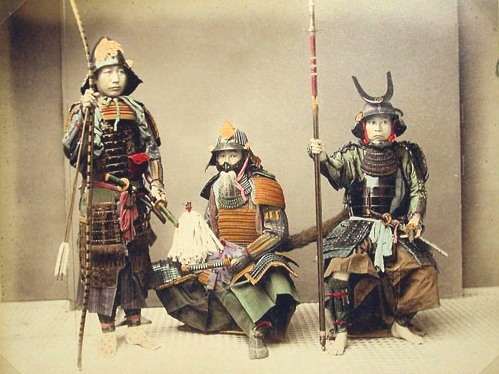


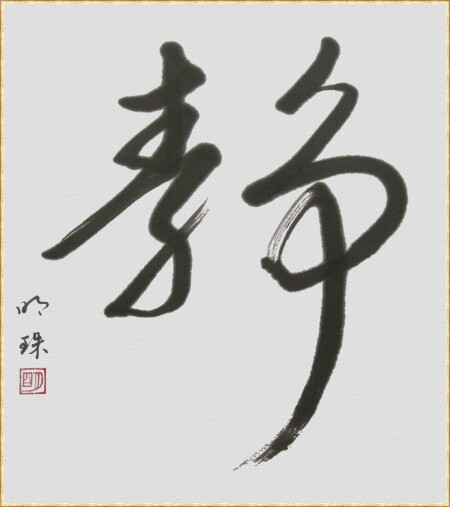


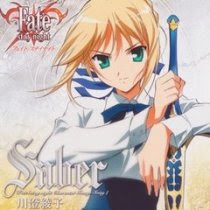
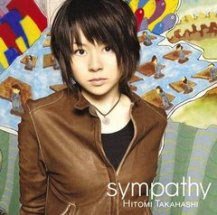

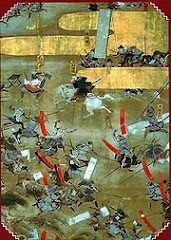
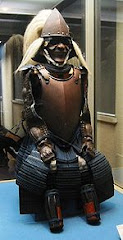
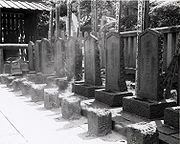

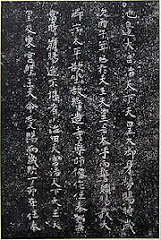
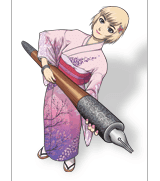


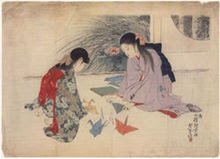
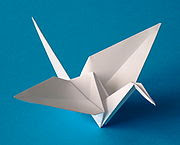

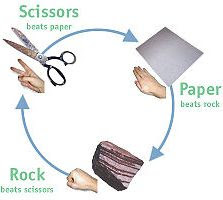
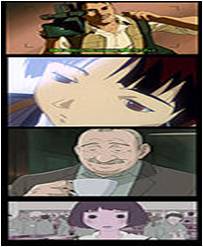
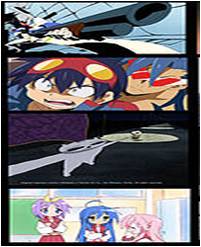

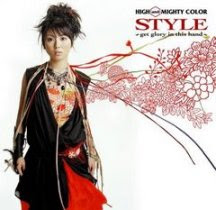
No comments:
Post a Comment